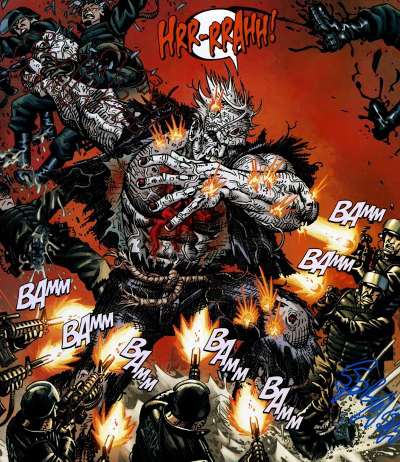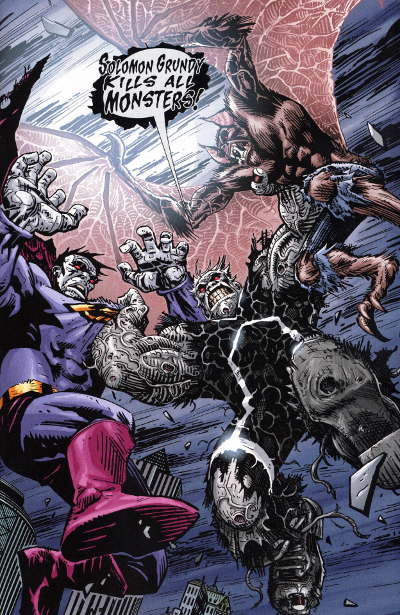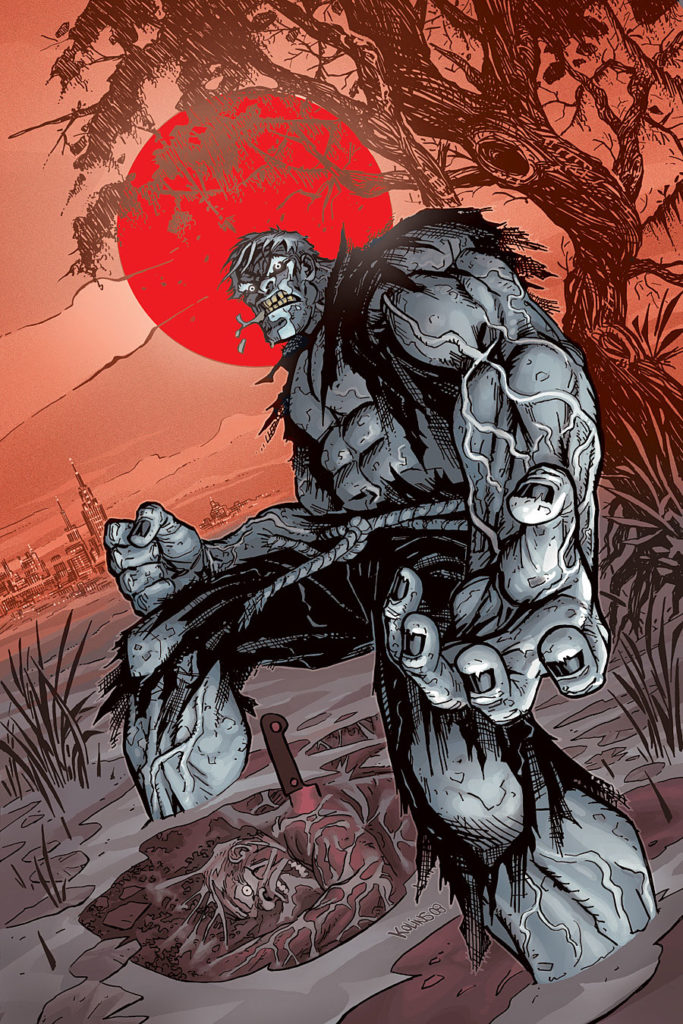It’s easy to sum up DC supervillain Solomon Grundy for anyone that hasn’t heard of him before; he’s basically a zombie Hulk. Grundy actually predates the Hulk by a couple of decades, with an origin that has more in common with that other DC antihero Swamp Thing. In this case, a cruel and vicious murderer named Cyrus Gold was stabbed to death and dumped in Slaughter Swamp on the outskirts of Gotham City back in 1885; only for a combination of mysterious swamp juices to bond with his body and reanimate him as an unstoppable shambling menace.

Not specifically related to the Nursery Rhyme of the same name (Born on a Monday, Christened on a Tuesday, etc…); it’s an appropriate pseudonym all the same, due to Grundy’s ability to resurrect himself within days or even hours of being killed. If you’re looking for more details on Grundy’s Golden and Silver age roots, I’d recommend giving Peter Watson and David Steel’s cracking Earth 2 podcast a listen.
Despite being quite obscure, Grundy is a fantastic horror foil, especially for some of the more fantastical characters from the DC comics roster, and so he has continued to make appearances through the decades. His profile has increased of late, with appearances in the Justice League animated series, as well as in the live action Gotham tv show, and most spectacularly in the 2020 Amazon series Stargirl.
In terms of recent comics series, I can happily recommend the 7-issue miniseries Solomon Grundy from 2009, which is a bit of a guilty pleasure of mine. This sees the villain trapped in a cycle of resurrection and death for 7 days, whilst tasked as Cyrus Gold to finally uncover the truth behind his death, in order to try and reverse his eternal curse once and for all. It’s not a particularly nuanced comic; with each issue really serving as an excuse to pit Grundy in a series of battles against an array of opponents from Grundy’s storied past. The pace is absolutely break-neck, and writer/artist Scott Kolins doesn’t waste any time on needless characterisation or exposition, so new readers may be left a bit lost at the revolving door of weird misfits and anti-heroes. The main strength here is Kolins nightmarish artwork; much darker and more textured than his usual superhero storytelling (e.g. on The Flash), whilst still every bit as action-packed.

The 2009 series was bookended at the start by Faces of Evil; a line of one-shots that spotlighted DC’s various Rogues, and at the end by Blackest Night; a mega-event in which many of the deceased characters from DC’s history were resurrected as an army of emotion-eating space zombies trying to take over the universe. So the time was ripe for a gothic Royal Rumble to plug this gap, and Solomon Grundy fit the bill really nicely. Kolins got to close out Grundy’s sad story with a 2-part Blackest Night tale in Superman/Batman #66 and #67, tying up some remaining loose ends, and giving the unrepentant supervillain a suitably spectacular end.


